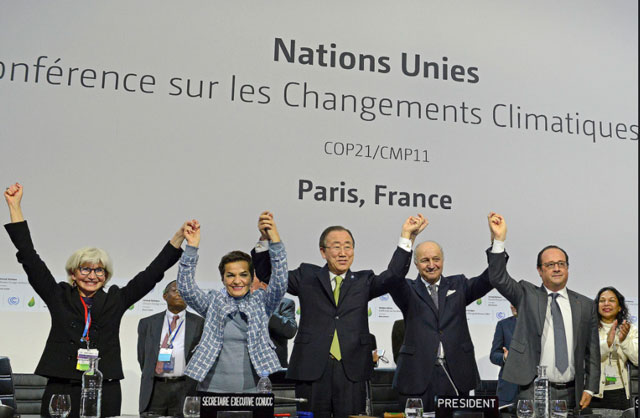
Paris, France | AFP | On December 12, 2015, 195 countries gathered in the French capital to conclude the first truly universal climate treaty, the Paris Agreement, aimed at preventing the worst-case scenarios of global warming.
The Palestinian Authority and Nicaragua have since also signed up, while President Donald Trump announced in June he would withdraw the United States from the pact championed by his predecessor, Barack Obama.
The United States and Syria are now the only two parties outside of the pact, even though America’s withdrawal will only become official in 2020.
– The goal –
Nations agreed to hold global warming to “well below” two degrees Celsius (3.6 degrees Fahrenheit) over pre-Industrial Revolution levels, and on “pursuing efforts” to keep it to 1.5 C.
The lower goal was a demand of poor countries and island states at high risk of climate change effects such as sea-level rise.
But experts say even the two-degree ceiling is a tall order, requiring an immediate and deep reduction in planet-warming emissions from burning fossil fuels.
Based on voluntary emissions cuts pledged by countries so far, the planet is on track for warming of about three degrees, scientists warn — a recipe for more frequent and intense floods, droughts and superstorms.
– Getting there –
The signatories will aim for emissions to peak “as soon as possible”, with “rapid reductions” thereafter.
By the second half of this century, according to the pact, there must be a balance between emissions from human activities such as energy production and farming, and the amount that can be absorbed by carbon-absorbing “sinks” such as forests or storage technology.
The UN’s climate science panel says greenhouse gas emissions have to drop 40-70 percent between 2010 and 2050, and to zero by 2100 for any chance at the 2 C target.
– Tracking progress –
In 2018, and every five years thereafter, countries will take stock of the overall impact of their efforts to rein in global warming, according to the text.
It “urges” and “requests” all countries to update emissions-cutting pledges by 2020 and every five years after that.
Some nations, including the United States, set emissions-curbing targets for 2025, others for 2030.
– Financing –
Rich countries are expected to provide funding to help developing countries make the costly shift to cleaner energy sources and to shore up defences against the impacts of climate change.
Donor nations must report every two years on their financing levels — current and intended.
In a non-binding “decision” that accompanies the agreement but is not included in it, the $100 billion (86 billion euros) per year that rich countries have pledged to muster from 2020 is referred to as a “floor” — meaning it can only go up.
The amount must be updated by 2025.
According to an OECD report, pledges made in 2015 alone would boost public climate financing (excluding private money) to $67 billion in 2020.
But Trump has said the United States, which had pledged $3 billion towards the Green Climate Fund, of which it delivered $1 billion under Barack Obama, would not fulfil its financing commitments.
 The Independent Uganda: You get the Truth we Pay the Price
The Independent Uganda: You get the Truth we Pay the Price



